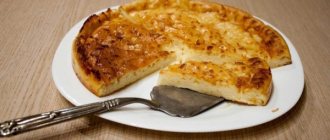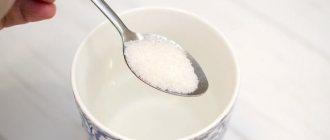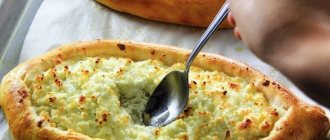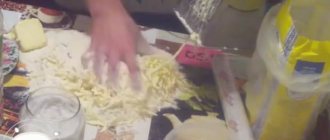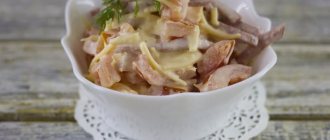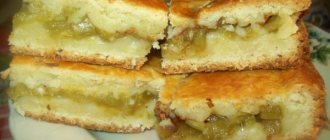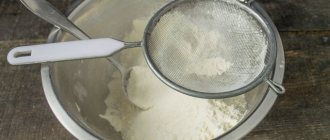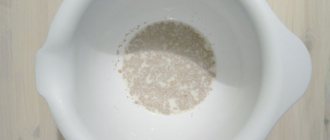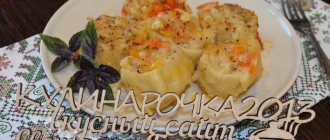Today I have a special pastry for you - Adjarian khachapuri, a real Georgian recipe. I discovered this recipe for myself relatively recently, but I and my family have already fallen in love with it.
Everyone knows such a tasty and satisfying national dish of Georgia as khachapuri. This is a flatbread made from dough filled with cheese. It would seem that the dish is very simple, but not everything is as simple as it might seem.
In Georgia, there are several options for preparing such a simple dish as khachapuri. The method of preparation, the shape of khachapuri, the filling and even the dough depend on the region in which they are made.
Khachapuri in Georgia can be made from absolutely any dough - yeast, puff pastry or unleavened. The classic dough for khachapuri is made on the basis of matsoni. The fermented milk drink matsoni is of Armenian origin and is made on the basis of fermented milk, but it fits very harmoniously into the national cuisine of Georgia and into the cuisine of many peoples of the Caucasus.
The filling for Adjarian khachapuri is certainly cheese. Any soft or pickled cheese is an ideal filling for khachapuri. Sometimes cheese is mixed with cottage cheese or khachapuri is made only with cottage cheese filling, but this is a departure from the classics, a variation on a theme, so to speak.
Imereti and Adyghe cheeses, Suluguni cheese or feta cheese are the most popular fillings for Georgian flatbread with cheese. Very often chopped cilantro, parsley or dill are added to the filling. It happens that the cheese is too salty and then it is soaked in water. This process can take from two to five hours, the duration of soaking depends on how salty the cheese is. To quickly remove excess salt from cheese, large pieces of cheese are cut into slices, each about 2-3 cm thick, and soaked instead of the whole piece.
There are mainly three types of khachapuri in shape - closed and open round flatbreads, boats and square envelopes made of puff pastry. By the way, judging by the appearance of khachapuri, one can safely say from which region of Georgia the recipe for its preparation was taken.
The most famous and recognizable, in addition to the classic ones, are khachapuri from regions such as Megrelia, Adjara and Imereti.
Today I would like to talk about Adjarian khachapuri, the recipe for which Tatyana shared with me. As I understand it, Tanya was taught to cook real khachapuri by Maya Rezoevna, and then a chain reaction started. I made them and couldn’t help but share this recipe with you. You will cook them and share them with your friends and guests.
This is a very cool recipe. And since I am a terrible cheese lover, I can confidently say that this is exactly my recipe and I am now a big fan of khachapuri. I would be ready to eat them every day if I weren’t afraid for my waist. But there is something to be afraid of, since with such baking you can turn into a bun, and I really wouldn’t want that. In general, cheese pastries are good, but only on holidays.
Step-by-step recipe with photos of Adjarian khachapuri “Boat”
Kitchen utensils: large bowl to mix the dough; deep bowl for preparing the filling; beaker; whisk; scales; a sieve to sift flour; baking tray; cling film; grater; rolling pin; oven.
Ingredients
| flour | 1 kg |
| warm milk | 300 mg |
| warm water | 300 mg |
| dry yeast | 20 g |
| salt | 2 tsp. |
| sugar | 2 tsp. |
| vegetable oil | 50 g |
| soft cheese (cream, curd) | 800 g |
| sulguni cheese | 600 g |
| cream 33% | 120 mg |
| eggs | 10 pieces. |
| butter | 120 g |
Ingredient Selection
- If you want to add heavy cream rather than milk, then use it in the following proportion: 500 ml warm water per 100 ml warm cream
Important! A real Georgian recipe for Adjarian khachapuri implies that raw egg yolks are placed in a ready-made flatbread boat. The yolk remains raw, so the eggs you use for this dish must be 100% fresh and of high quality. It is advisable that these are the freshest homemade eggs delivered from a farm known to you.
- The shell of homemade eggs is thicker and stronger than store-bought eggs (eggs from poultry farms), and it more reliably protects the egg from various infections. Eggs that are supplied to stores from poultry farms have more porous and thin shells.
- Of course, there is a greater risk of contracting something like salmonellosis, although the birds there are given antibiotics. If you still use store-bought eggs at your own peril and risk, make sure that they are of the very first freshness.
Cooking sequence
Preparing the dough
- The dough prepared in this way is more tender, and the cooking process is faster than straight dough. Pour 300 ml of warm water (about 40°C) and 300 ml of warm milk at about the same temperature into a measuring cup. Pour the warm milk mixture into a large, deep bowl or any other container that is convenient for you to knead the dough. Add 20 grams of dry yeast, 2 teaspoons of salt and the same amount of sugar. Stir and wait a couple of minutes for the yeast to disperse. You will get a homogeneous mass.
I had dry yeast in stock. But if you prepare the dough with live yeast, keep in mind that you will need 3 times more yeast by weight. That is, not 20 grams, like dry ones, but 60. Instead of milk, you can use cream. For the test you only need 600 ml of warm liquid. - Sift 250-300 grams of flour into this bowl through a sieve. Mix with a whisk until smooth. The consistency of the dough should be approximately the same as dough for thin pancakes, only a little thicker. Leave it to rise for 20-25 minutes in a room at room temperature, without air conditioning or drafts.
- When you see a lot of bubbles on the surface and foam, this means that the dough has fit perfectly and you can continue working with the dough.
Preparing the dough
- Sift the remaining 700 grams of flour into a bowl with the dough. Stir the flour with a wooden spatula. When the dough has not yet become homogeneous, add 50 grams of vegetable oil.
- When it becomes difficult to mix with a spatula, start kneading it with your hands. Stir until smooth. Dust a clean counter with flour and continue kneading for another 5-7 minutes. You should get a soft, manageable, uniform, elastic dough.
- Roll it into a bun, and then into an oblong sausage. Separate a piece of dough from it so that it fits in your palm (about the size of a loaf, if you want to make a medium-sized pie, if you want to make it a large one, separate a larger piece of dough). Roll out the dough, remember and make a uniform, beautiful ball. Then press down a little on top and turn it into a slightly flattened flatbread. Place it on a floured baking sheet. This will be the place for proofing the dough.
Make as many of these cakes as you are going to make pies (2 medium-sized pieces fit on one baking sheet). These are preparations for khachapuri, and they still need to rise and increase slightly in volume. Then you can roll them out and give them the desired shape, while maintaining the tenderness, fluffiness and airiness of the dough. Sprinkle flour on top of the tortillas, cover with cling film and leave for 30-40 minutes.Prepare the filling and form the khachapuri
- When the flatbreads are ready, you can start preparing the filling. Grate 600 grams of suluguni on a coarse grater. Transfer it to a large deep bowl. Send 800 grams of soft cheese there, pour in 120 ml of cream and grind the cheese mass with a fork.
- Take a piece of delicate, soft, airy dough in your hand. Sprinkle the work surface with flour and roll it out with a rolling pin into a round cake with a diameter of approximately 20 cm. Do not press too hard on the rolling pin, try to maintain the airy consistency of the dough. No need to roll it out too thin.
- Dust a baking sheet lined with parchment paper with flour and place the rolled out flatbread there. Place the filling in its center (about 3 tablespoons per tortilla) and spread it over the entire surface of the tortilla. Make sure that the layer of filling is thin around the edges and thicker towards the middle.
- Roll the dough from one side and the other of the cake, moving towards the middle (try to imitate a boat). Pinch the dough around the edges with your fingers. Make the second pie in the same way.
- Take 3 eggs and separate the yolks from the whites. Stir 1 yolk until smooth and brush the boats with it.
- Place the baking sheet with khachapuri in the oven, preheated to 180°C, bake until golden brown for 15-20 minutes.
- Remove the browned cakes from the oven and place a raw egg yolk in the center of each, directly on the cheese, and a few small pieces of butter on the sides of the yolk. In such a wonderful form, piping hot, the pies can be served on the table. Enjoy.
Imeretian-style khachapuri and equally tasty Megrelian-style khachapuri are also popular around the world. Try preparing these wonderful dishes using our recipes.
Cooking video recipe
This video contains a very detailed recipe for Adjarian khachapuri “Boats”. Watch to better understand all the subtleties and nuances of cooking.
How to cook khachapuri: Georgia tastes
You've probably, if you haven't tried it, heard about the national Georgian dish khachapuri. You will fall in love with this “pie with cheese filling” from the first bite... In different parts of Georgia it is prepared in different ways: in the form of an envelope or a boat, closed or open, from yeast, unleavened or puff pastry - there are a great many variations. In our selection we will share the most delicious khachapuri recipes!
The peculiarity of this khachapuri is that the filling is placed both inside the flatbread and on top of it. It turns out something like “Georgian pizza” on yeast dough.
How to cook:
- Knead the dough: dissolve salt and sugar in water, add flour and yeast to it, stir well, and then add soft margarine to the mixture. Leave for 1.5 hours under a towel.
- Grate the cheese on a coarse grater.
- Roll out the dough into a flat cake, lay out the filling and gather the edges in the center.
- Roll out the cake again on both sides, making a hole about 5 centimeters in the center.
- Place the khachapuri on a baking sheet, brush generously with yolk, sprinkle with cheese and bake for 20 minutes at 220 degrees.
This is an open version of khachapuri, resembling a boat. For the filling, as a rule, lightly salted soft cheese (Adyghe, Imeretian, etc.) is used, and for the dough - matsoni (it can be replaced with kefir or sour cream).
How to cook:
- Mix flour with softened butter, add sour cream, salt, soda and stir thoroughly until a plastic consistency is obtained. Leave in the refrigerator for 30 minutes.
- For the filling, grate the cheese, add the egg and chopped herbs.
- Divide the dough into 8 equal parts and roll them into balls. Roll each ball into a flat cake, spread the filling over the entire surface and gather the flat cake from the sides into a boat, rolling each edge into a roll to the center.
- Bake khachapuri for 20 minutes at 200 degrees. You can pour the egg into the center of the boat and put it in the oven for another minute until the whites curl.
It is prepared on the basis of curd dough, as a result of which this khachapuri does not go stale longer - it can be served even on the 2nd day!
How to cook:
- Mix cottage cheese, melted margarine, salt and eggs.
- Suppress the soda and add to the dough. Use enough flour to form a stiff mass. Leave in a cool place for 20 minutes.
- For the filling, mix grated cheese, chopped garlic (+ herbs to taste) and sour cream.
- Divide the dough into 2 parts: roll one out and brush with filling, and place the second (also rolled out) on top. Connect the dough in a circle, spread with yolk for the crust and sprinkle with sesame seeds.
- Bake for 50 minutes at 180 degrees.
Follow simple recipes and your loved ones will forever remember the taste of homemade khachapuri. Or maybe they will ask for more! And if you’re not a good cook, don’t worry. You can always visit an oriental restaurant and try your favorite Georgian dish there.
How to eat khachapuri in Adjarian style
Usually these flatbreads are served as a separate dish, without sauces. Just a little greenery, and there will be no need to cut fresh vegetables. It will be delicious to eat this pie with a cup of aromatic herbal tea or other favorite drink. Goes well with fermented milk products (kefir or unsweetened yogurt).
To eat this dish, you do not need cutlery; it is eaten with your hands. The correct way is to break off a piece of dough with cheese, dip it in the yolk and eat. Break off from each edge, gradually approaching the center, and you will undoubtedly appreciate the taste of this magical “boat”.
Bistro "Khachapuri"
A small cozy place with a soulful smell of baked goods. The assortment here includes different types of khachapuri, khorziani, lobiani, boats with kharcho and solyanka - everything is hearty, colorful Georgian.
The dough for khachapuri in Adjara is fluffy - yeast. Filling: suluguni cheese, egg and butter. As simple and delicious as possible. A huge 600-gram khachapuri costs 400 rubles, a smaller version - 300 grams - will cost 300 rubles. Can be ordered with home delivery.
Address: st. Navaginskaya, 9-d, Atrium shopping center (1st floor), st. Plastunskaya, 198/2
Website : www.khachapuri-sochi.ru
Cooking options
Recipes for khachapuri dough in Georgian, namely Adzharian, also differ in each family. It is made with milk, kefir, sour cream or cream. If you cook using the straight method, then you need to knead the yeast dough for 10-15 minutes, and then put it in a warm place to rise for 2-3 hours.
Then roll into a sausage, divide into parts according to the number of finished products and make pies. As a filling, you can use any young pickled cheese or its combination with cottage cheese or other soft cheese. Look at us how easy it is to prepare -khachapuri with cheese from puff pastry-, and a lazy version of the Georgian pie -khachapuri from lavash-.
Did you like the flatbreads according to my recipe, did they turn out incredibly tasty, as expected? Send us your comments and additions to the recipe. Cook with love.
Lazerson's principles. Cooking khachapuri
Khachapuri is a Georgian pastry. Let's prepare two types of khachapuri: closed (flatbread) and open (boat).
Let's start cooking with the dough. For khachapuri, prepare a simple yeast dough. Pour water into the mixer. Add salt, a little sugar, a drop of vegetable oil and a small piece of yeast. Turn on the mixer. Gradually add flour with a tablespoon. Add until the dough begins to separate from the walls. Dust your fingers with flour. Take the dough out of the mixer. Put it in a bowl. Sprinkle flour on top. Cover with a napkin. We do not wrap it with cling film. The dough must breathe. Place in a warm place. Let's rise.
Principle No. 1: The dough is more pliable!
The dough should be pliable, not very dense. This dough will be softer and more tender than that for dumplings or dumplings. Let's prepare the filling. Let's take Georgian suluguni cheese. It melts well. Block mozzarella for pizza belongs to the same group of cheeses. Grate the suluguni on a coarse grater. It is more convenient to grate cheese that has just been taken from the refrigerator. Salt the cheese a little. Be sure to add an egg, which will combine the filling. Add flour and water. Mix. Roll the filling into a ball. Divide into two balls.
Principle #2: Dough = filling (by weight)
Divide the dough into parts. Cheese and dough have different densities. With the same weight, the dough will be slightly larger in volume than the filling. Make two dough balls. Preheat the oven to maximum temperature (250, 280, 330 degrees).
Prepare khachapuri in the form of flatbread. Turn the pan over. Cover with parchment. Sprinkle the table with flour. Using your fingers, spread the dough into a flat cake. Place a ball of filling on top. We close the filling with dough “in a bag”, fasten and seal the edges. Let's trim the sides. Sprinkle with flour. Turn over onto the seam. We form the cake with our hands, trying to do without a rolling pin. Place on a baking sheet. Pinch off a little dough in the center so that the cake does not swell. Bake in the oven for about 8-10 minutes.
Prepare khachapuri in the shape of a boat. Cover a baking sheet with parchment. Knead the dough with your hands. Then roll out the dough with a rolling pin from the center to the edges. Turn the cake over from time to time. “Stroke” with flour. You should get a thin cake. Roll one edge of the dough into a roll to the middle of the cake. Then we twist the opposite edge towards the middle. We fasten the rolls along the edges. Place on a baking sheet. From the middle we roll the rolls back, forming a boat. Distribute the filling evenly into the cavity of the dough. Place in the oven for 8-10 minutes.
We take out the flatbread. Lubricate the top well with butter. Place on a plate. We get the boat. Make a hole in the cheese. Break the egg and place in the oven for one minute. The egg remained raw, but the white had set a little. Stick pieces of butter between the filling and the dough.
Principle #3: Eat your boat the right way!
Using a fork, mix the egg with the cheese filling. Then we tear off the edges of the boat and dip it into the filling. Bon appetit!
Cafe of Black Sea cuisine “What? Kharcho!
In terms of the level of cuisine and the design of the hall, “Kharcho” is more of a restaurant than a cafe. Colorful Georgian cuisine is located in places of tourist attraction: on the Mayak embankment and in Rosa Khutor.
Adjarian-style khachapuri is prepared here from delicate semi-yeast dough. The establishment works with local suppliers, so the cheese for the filling is homemade suluguni. Khachapuri weighs 300 grams and costs 370 rubles. They promise an equally delicious “boat” both in the sea and in the mountains.
Address: Krasnaya Polyana, Rosa Khutor Group of Companies, Mzymta Dvor; st. Primorskaya 3/10
Website: www.che-harcho.ru
Restaurant "Iveria"
The advantage of the restaurant is that, being on the embankment, it is hidden from prying eyes. And the “medieval” style, standard for many Sochi establishments, is more than compensated by the view of the sea.
Here, Adjarian-style khachapuri is made from yeast dough and local homemade suluguni cheese. For 400 grams of melting cheese delight you will pay 330 rubles.
Rumor has it that KVN and Kinotavr stars came here to eat khachapuri.
Address: st. Chernomorskaya, 3
Website: alas, it doesn’t exist

